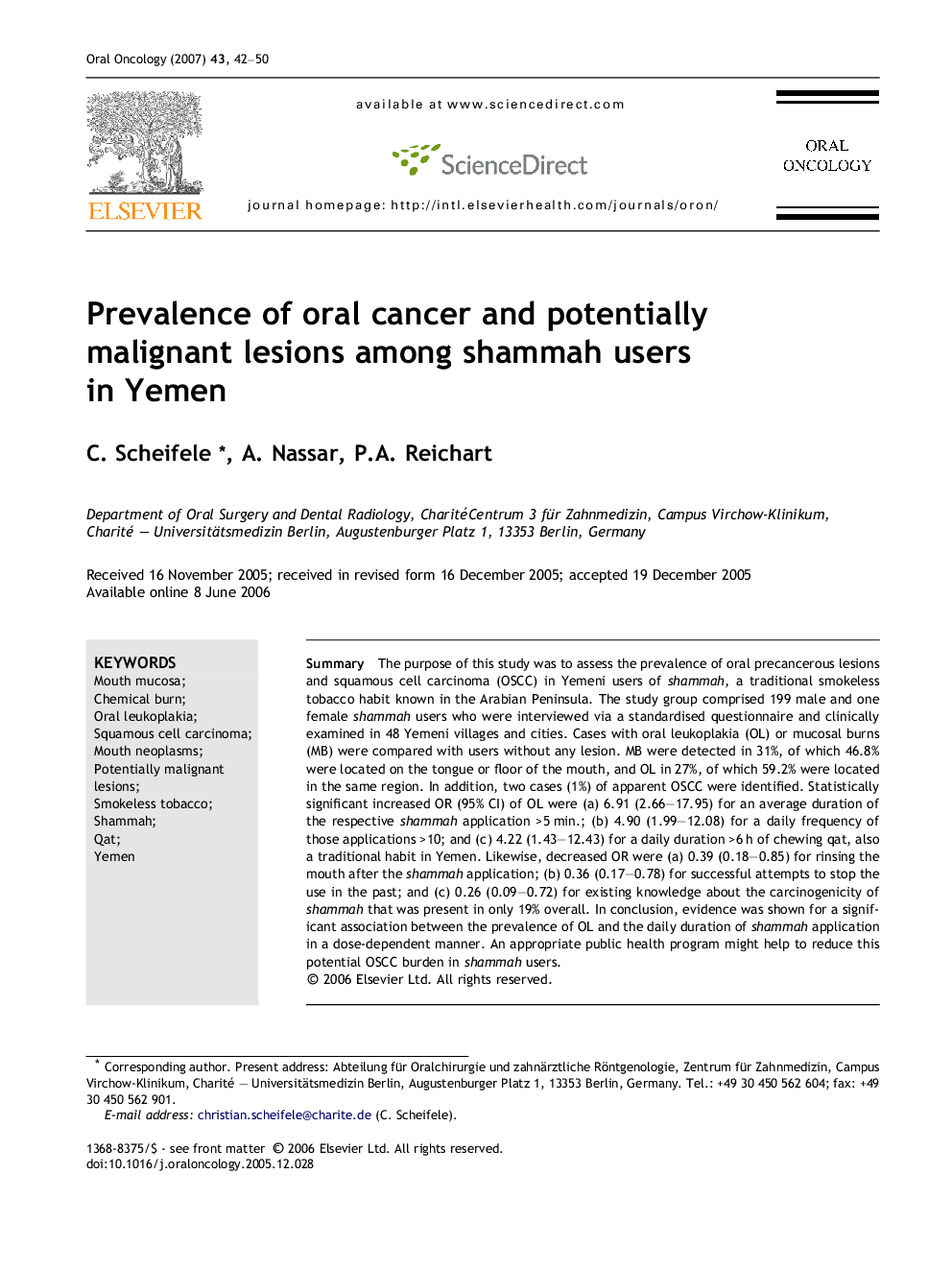| Article ID | Journal | Published Year | Pages | File Type |
|---|---|---|---|---|
| 3165963 | Oral Oncology | 2007 | 9 Pages |
SummaryThe purpose of this study was to assess the prevalence of oral precancerous lesions and squamous cell carcinoma (OSCC) in Yemeni users of shammah, a traditional smokeless tobacco habit known in the Arabian Peninsula. The study group comprised 199 male and one female shammah users who were interviewed via a standardised questionnaire and clinically examined in 48 Yemeni villages and cities. Cases with oral leukoplakia (OL) or mucosal burns (MB) were compared with users without any lesion. MB were detected in 31%, of which 46.8% were located on the tongue or floor of the mouth, and OL in 27%, of which 59.2% were located in the same region. In addition, two cases (1%) of apparent OSCC were identified. Statistically significant increased OR (95% CI) of OL were (a) 6.91 (2.66–17.95) for an average duration of the respective shammah application >5 min.; (b) 4.90 (1.99–12.08) for a daily frequency of those applications >10; and (c) 4.22 (1.43–12.43) for a daily duration >6 h of chewing qat, also a traditional habit in Yemen. Likewise, decreased OR were (a) 0.39 (0.18–0.85) for rinsing the mouth after the shammah application; (b) 0.36 (0.17–0.78) for successful attempts to stop the use in the past; and (c) 0.26 (0.09–0.72) for existing knowledge about the carcinogenicity of shammah that was present in only 19% overall. In conclusion, evidence was shown for a significant association between the prevalence of OL and the daily duration of shammah application in a dose-dependent manner. An appropriate public health program might help to reduce this potential OSCC burden in shammah users.
